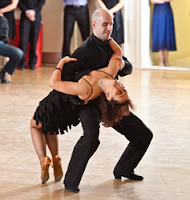Radhika Dance Academy
hello! in today's blog Iam going to give explanations of remaining dance style of India we are going to see in this blog so let's go.
- Garba
- Hip Hop
- Belly Dance
- Hojagiri
- Jumar
1. Garba
Garba is a dance that honors, worships, and celebrates the feminine form of divinity. The word "garba" comes from the Sanskrit word garbha, meaning "womb." Traditionally, the dance is performed by women in a circle around a clay lantern with a light inside, called a garbha deep ("womb lamp")
2. Hip Hop
Hip hop dance is a style of street dance form that evolved from hip hop culture and hip hop music. It borrows elements from a number of different styles like African dance, tap, and ballet. Hip hop dance began as a freestyle dance performed in the streets by dance crews, mostly to hip hop music.
3. Belly Dance
In common with most folk dances, there is no universal naming scheme for belly dance movements. Many dancers and dance schools have developed their own naming schemes, but none of these is universally recognized. The following attempt at categorization reflects the most common naming conventions
4. Hojagiri
Hojagiri is a Tripuri Reang tribe folk dance performed in the state of Tripura, India. Reang or Riang are one of Tripura's scheduled tribes. The correct name for this ethnic group is Bru. It is performed by a team of 4 to 6 women and young girls who sing while balancing on an earthen pitcher and managing various props such as a bottle on the head and an earthen lamp in the hand. This article will explain to you the concepts related to Hojagiri which will be helpful in Indian Art and Culture preparation for the UPSC Civil service exam.
5. Jumar
Jhumair or Jhumar is an Indian folk dance from the Indian states of Jharkhand, Odisha, Chhattisgarh, Assam, Bihar and West Bengal. It is folk dance of Sadan, the Indo-Aryan ethnic groups of Chotanagpur. It is mainly performed during harvest season. The musical instruments used are Mandar, Dhol, Nagara, Bansuri.



Comments
Post a Comment